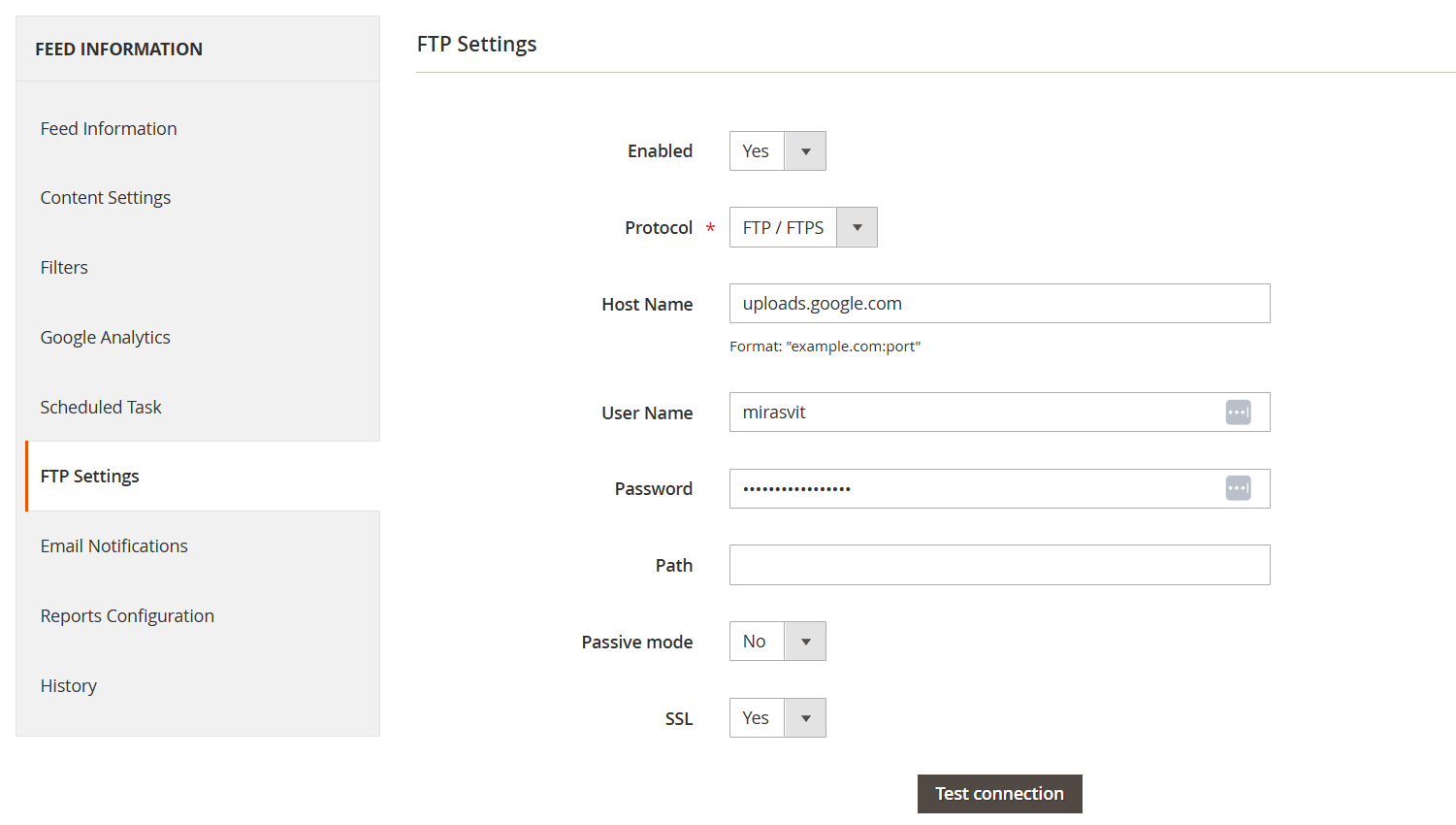FTP settings
The FTP delivery settings allow the extension to automatically upload generated feed files to an external server, such as a shopping engine service or marketplace. Below is a detailed explanation of each setting:
Check the marketplace merchant account for FTP/SFTP details or contact the marketplace's support center for credentials.

-
Enabled (Yes/No): enables or disables FTP delivery for the feed. When enabled, the feed file will be automatically uploaded to the configured FTP server.
-
Protocol (FTP/SFTP): specifies the file transfer protocol:
- FTP (file transfer protocol): standard method for transferring files.
- SFTP (secure file transfer protocol): a more secure method that encrypts the transfer.
-
Host name: the server address where the feed file will be uploaded. Format: example.com:port. The port is optional and depends on the service provider's requirements.
-
User name: the FTP/SFTP account username required to log in to the server.
-
Password: the FTP/SFTP account password used for authentication.
-
Path: the directory on the FTP/SFTP server where the feed file should be stored. This is usually provided by the marketplace or service provider. If left empty, the file is uploaded to the root directory.
-
Passive mode (Yes/No): controls how the connection is established.
-
SSL (Yes/No): enables or disables SSL encryption for the connection. Some servers require SSL for secure data transmission.
-
Test connection: button is used to verify that the FTP settings are correctly configured. When clicked, the system attempts to connect to the specified FTP/SFTP server using the provided credentials.
How it works:
- Checks if the host name, user name, and password are valid.
- Verifies whether the selected protocol (FTP/SFTP) is supported by the server.
- Ensures the path (if specified) exists on the server.
- Confirms whether passive mode and SSL settings match the server's requirements.
Possible results:
Success: the system successfully connects to the FTP/SFTP server, confirming that the settings are correct. Failure: the connection test fails, often due to:
- Incorrect credentials (host name, user name, or password).
- Missing port.
- Server restrictions (firewall blocking the connection).
- Incorrect passive mode or SSL settings.
- Incorrect path (if the folder does not exist).